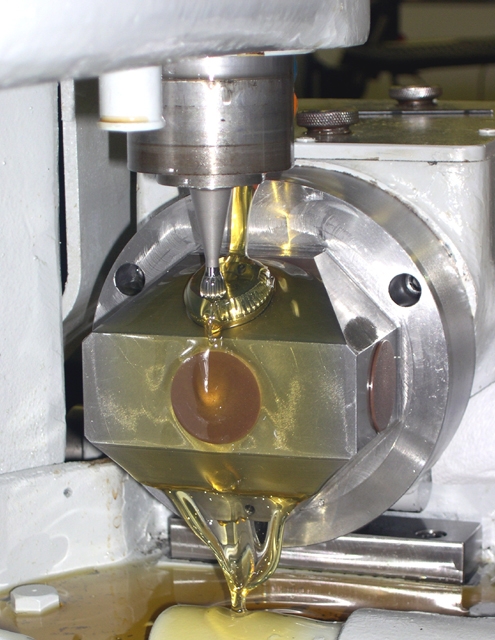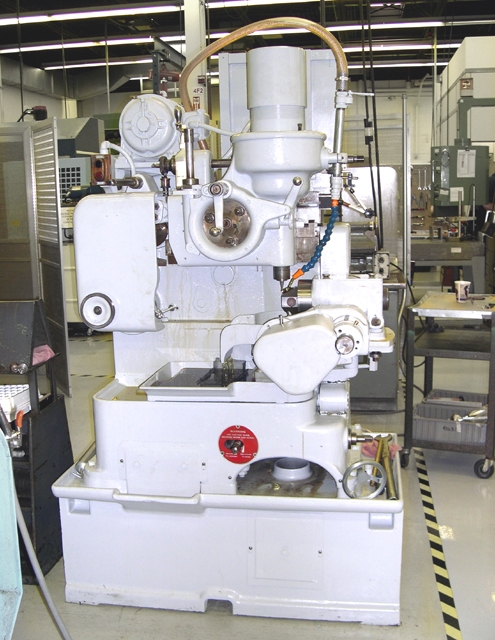Face gears are manufactured by shaping on special, but readily available machines, with tool and work axes intersecting at 90 degrees angle. Teeth are generated in radial direction in the plane perpendicular to the axis of rotation. Tool reciprocates vertically and rotates (preset ratio between the part and the tool) as it forms the involute profile of the tooth. This allows an uninterrupted conjugate action between pinion and face gear during operation.
In the case described here it had been necessary to modify the standard, 90 degrees gear-pinion configuration and introduce new, 60 degrees angle because of the housing’s envelope constraints. It looked simple from a design standpoint but extremely challenging on the manufacturing side. It turned out that there are no machines capable of producing required angle available.
This led to the design of this special attachment for the Fellows #7 gear shaper. The change of the axis of rotation of the work from 90 to 60 degrees is achieved here by incorporating 3 miter bevel gears (see 3D model diagram) with one of them acting as an idler. At the first stage, between input and the idler gear, motion is transferred in a horizontal plane and it’s switched to 60 degrees at the output side.
Device is bolted directly onto the work-head of the machine and vertically aligned with the axis of the tool. In order to transfer the rotating motion between the machine output and the fixture, external involute spline on the input shaft meshes with the internal spline on the machine’s head.




